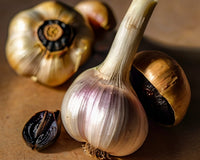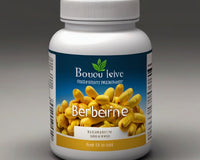What is sodium chloride?
Sodium chloride (NaCl), also known as salt, is what our bodies use to:
- Absorption and transportation of nutrients
- Maintain blood pressure
- Maintain proper fluid balance
- Transmit nerve signals
- Contract and relax muscles
Salt is an inorganic compound, which means it does not come from living things. It is made by combining Na (sodium) and Cl (chloride) to form white crystalline cubes.
Your body needs salt to function, but too little or too much salt can be harmful to your health.
While salt is often used in cooking, it can also be used as an ingredient in food or cleaning solutions. In medical situations, your doctor or nurse will usually inject sodium chloride. Read on to learn why and how salt plays an important role in your body.
What is the difference between salt and sodium?
Although many people use the words sodium and salt interchangeably, they are different. Sodium is a mineral and a naturally occurring nutrient. Unprocessed foods, such as fresh vegetables, beans, and fruits, naturally contain sodium. Baking soda also contains sodium.
However, about 75 to 90 percent of the sodium we consume comes from salt that has been added to our food. Salt is usually a combination of 40% sodium and 60% chloride by weight.

How to use sodium chloride?
The most common use of salt is in food. Its uses include:
- Seasoning
- As a natural preservative
- Enhance the natural color of food
- Cleaning or preserving meat
- Create brine for pickling food
There are also a variety of home uses, such as:
- Clean pots and pans
- Moldproof
- Remove stains and grease
- Spread salt on roads in winter to prevent ice formation
When your doctor prescribes salt treatment, they will use the term sodium chloride. Sodium chloride is mixed with water to form a saline solution, which has many different medical uses.
Medical uses of saline solutions include:
| Name | Use |
| Intravenous drip | Treat dehydration and electrolyte imbalance; can be mixed with sugar |
| Saline injection | Flush the catheter or intravenous injection after administration |
| Nasal rinse or nose drops | Clear nasal congestion, reduce postnasal drip, and keep the nasal cavity moist |
| Clean the wound | Clean and flush the area for a clean environment |
| Eye drops | Treat red, watery and dry eyes |
| Sodium chloride inhalation | Helps produce mucus so you can cough it up |
It is important to consult a physician and use medical saline products only as prescribed (excluding over-the-counter products such as contact solutions). Different types of brine solutions will contain different ratios of sodium chloride to water. Salt water used for different purposes may also have additional chemicals or compounds added to it.

How much salt should you eat?

Although salt and sodium are different, salt is 40% sodium and we get most of our sodium from salt. Many companies and restaurants use salt to preserve, flavor, and season their food. Since one teaspoon of salt contains about 2,300 milligrams (mg) of sodium, it's easy to exceed your daily allowance.
According to the CDC, the average American eats more than 3,400 milligrams per day. You can limit your sodium intake by eating unprocessed foods. You may also find it easier to control your sodium intake by cooking more at home.
The Dietary Guidelines for Americans recommend that Americans consume less than 2,300 milligrams of sodium per day.
Low sodium diet
If you are at risk for high blood pressure or heart disease, your doctor may recommend that you stick to a low-sodium diet. If you have heart disease, you should try to consume less than 2,000 milligrams of sodium per day, although the American Heart Association (AHA) recommends keeping it under 1,500 milligrams. Eliminating processed foods like sausages and ready-to-eat meals may make maintaining that number easier.
What does your body use sodium chloride for?
Nutrient absorption and transport
Sodium and chloride play important roles in your small intestine. Sodium helps your body absorb:
- Chloride
- Sugar
- Water
- Amino acids (building blocks of proteins)
Chloride, when it is in the form of hydrochloric acid (hydrogen and chloride), is also a component of gastric juice. It helps your body digest and absorb nutrients.
Maintain resting energy
Sodium and potassium are electrolytes found in fluids inside and outside cells. The balance between these particles helps how your cells maintain your body's energy.
This is also how nerves send signals to the brain, muscles contract, and the heart functions.
Maintain blood pressure and hydration
Your kidneys, brain, and adrenal glands work together to regulate the amount of sodium in your body. Chemical signals stimulate the kidneys to retain water so that it can be reabsorbed into the bloodstream or to eliminate excess water through urine.
When there is too much sodium in your blood, your brain signals your kidneys to release more water into your circulation. This results in increased blood volume and blood pressure. Reducing sodium intake results in less water being absorbed into the blood. The result is lowered blood pressure.
In most cases, sodium chloride is not harmful to your health, but excessive amounts can irritate you:
- Eyes
- Skin
- Airway
- Stomach
You can treat irritation by flushing with clean water or breathing fresh air, depending on the area. If the irritation doesn't stop, get medical help.
Too much salt
While sodium is essential, it is also found in almost everything we eat. Eating too much salt is related to the following factors:
- Hypertension
- Increased risk of heart disease and kidney disease
- Increased water retention, which can cause swelling in the body
- Dehydration
Side effects of saline solution
Saline solutions are usually given intravenously or through a vein. Highly concentrated saline solutions can cause redness or swelling at the injection site as a side effect.
Too little sodium
Sodium deficiency is often a sign of an underlying disease. The name for this condition is hyponatremia. This may be due to:
- Inappropriate secretion of antidiuretic hormone (ADH), caused by diseases that affect hormone balance, certain medications, and certain medical conditions
- Excessive drinking of water
- Prolonged vomiting or diarrhea
- Use some diuretics
- Some kidney diseases
Excessive and persistent sweating without proper hydration is also a potential cause, especially in people who train and compete in long-distance endurance events such as marathons and triathlons.
Summary
About 75 to 90 percent of sodium intake comes from salt or sodium chloride. Salt provides an essential mineral (sodium) that our bodies use for functions such as maintaining blood pressure and absorbing nutrients. You can also use salt to season food, clean household items, and solve certain medical problems.
The Dietary Guidelines for Americans recommend that you consume less than 2,300 milligrams of sodium per day. You can do this by eating less processed foods, such as cold cuts and prepackaged foods, and by cooking meals at home.
Too much salt can lead to larger health problems, such as high blood pressure, heart disease, and kidney disease. Reducing salt intake while increasing potassium intake can help reduce the risk of these diseases.
You should consult your doctor before adding more sodium chloride to your diet. Most people exceed the recommended amount, but people who drink too much water, have persistent diarrhea, or participate in prolonged endurance activities may be deficient in sodium. In these cases, good oral rehydration may help. In more severe cases, a healthcare professional may need to provide an intravenous (IV) saline solution to restore hydration and electrolytes.














